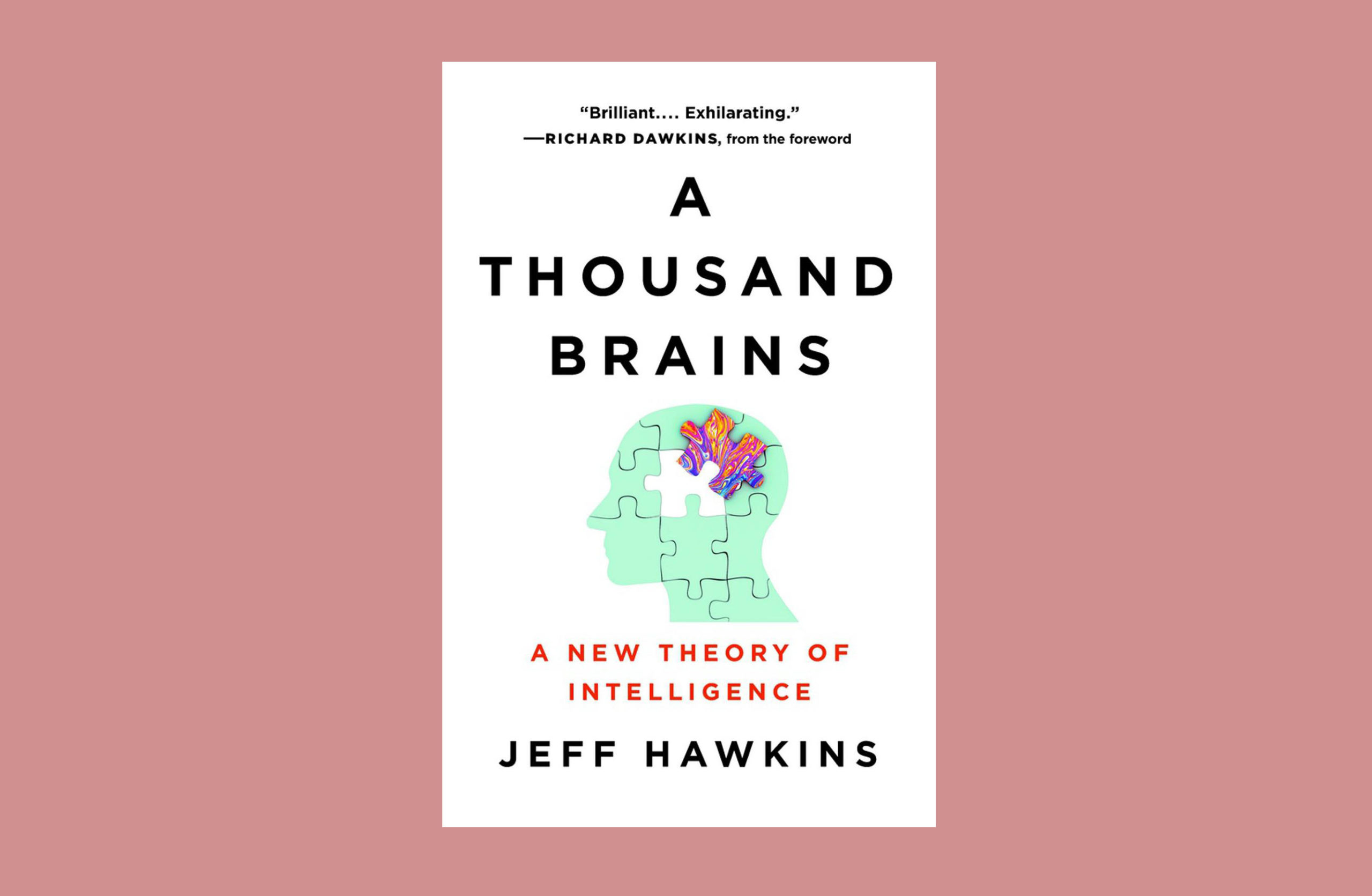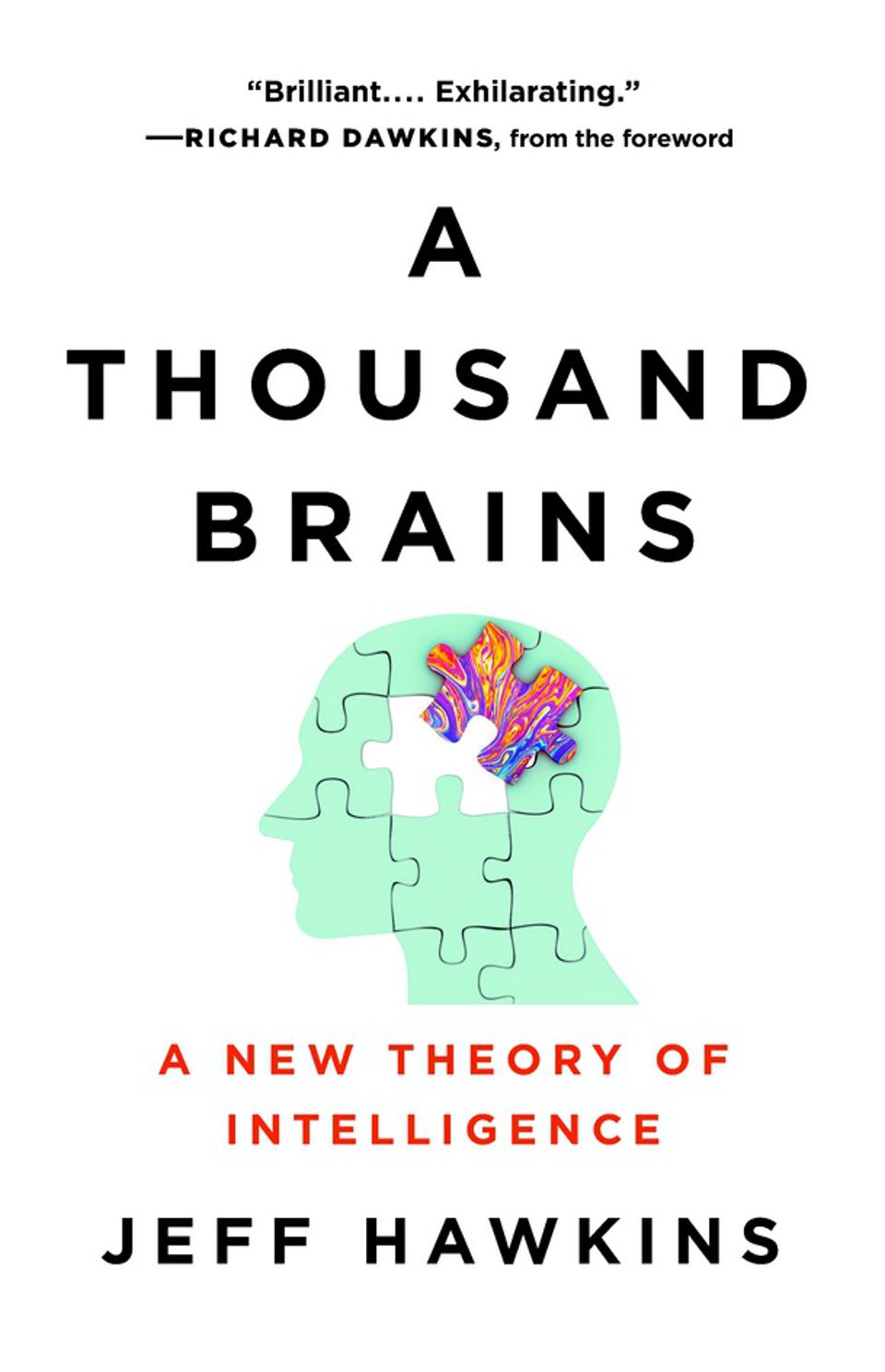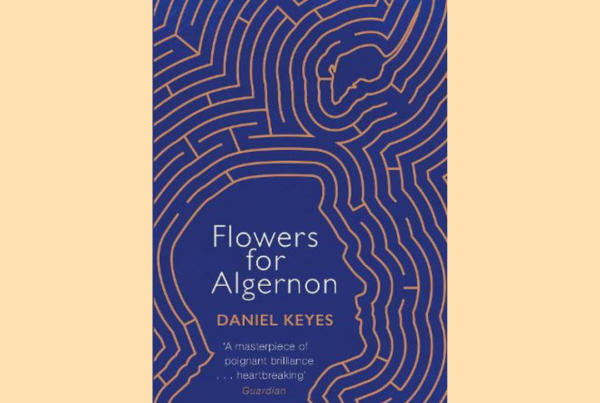
Jeff Hawkins is the founder of Numenta, a neuroscience research company, and is mainly devoted to neuroscience and its connection to artificial intelligence. Seventeen years after his first book On Intelligence he is again publishing literature on the topic, this time with his own theory about intelligence and an insight about the connections between the brain and AI. This review will give an overview of the book and what one can, and cannot, expect when reading it.
In the foreword of A Thousand Brains, Richard Dawkins claims that the book is “so exhilarating, so stimulating, it’ll turn your mind into a whirling maelstrom of excitingly provocative ideas – you’ll want to rush out and tell someone” and I only partly agree. While Hawkins’ theory is fascinating and – if you are interested in the workings of the brain – it might be a good idea to give it a read, it is not necessarily written for people studying intelligence and cognition. In the focus of his theory stands the neocortex. It might not be super new that the neocortex plays an important role in thinking and intelligence, but bear with me because Hawkins’ theory does more than just recycling old papers, and it actually adds some new facts. He came up with a new theory that is interesting and logical.
The book is divided into three parts. The first and longest part, A new understanding of the brain, introduces the theory after which this book is named: the “Thousand Brains Theory.” This section reads a bit like Hawkins’ biography, intertwined with reasons and arguments backing up his own view. While describing how several of his ideas have occurred to him, he provides literature from neuroscience backing up his reasoning. The first idea he talks about is probably the least shocking one but still noteworthy: the structure of the cortex. Inspired by a theory of the neurobiologist Vernon Mountcastle, a lot of scientists believe the cortex to be composed of many repeating units (mini columns), functioning semi-independently. They work in the same way, but the distinctive inputs to each of them give each one data on which they work independently. Hawkins describes the functioning of the cortex by using two metaphors. First, the work of the cortex as compared to the work of an engine. The major output neurons in the cortex integrate inputs from other cortical areas and those inputs are preparing a few major neurons to fire – and are repressing most others. If that input is consistent with the pattern that was ‘predicted’ by the other neurons, the sensory input ‘pushes’ those prepared neurons over their threshold, neurons fire, and the engine turns on. In case it was not consistent, many other neurons fire and draw attention to the discrepancy between the prediction and the input. This way, Hawkins claims, the neocortex learns a model of the world. The next metaphor will be known to those who are specializing in brain and cognition: reference frames. The neuroscientists Moser, Moser and O’Keefe showed that some cells are firing at regularly spaced intervals – frames – as an animal is moving. In humans, the cells may help to organize knowledge into dimensions by firing at regular intervals when our minds move, metaphorically, in the “concept space.”
In this first section of the book Hawkins also explains how the cortical microcircuits within one small column may be functioning. All cortical columns have their own individual set of expectations about what is going to happen, which is based on their own received information, but they arrive at some conclusion by a process that one could describe as voting. Again, if you have followed a few cognition courses, this concept might not be new to you. Moreover, the first section also introduces Hawkins’ criticism of the view that the brain works like a computer. He emphasizes that the brain should not be seen as just a machine that does information processing, but as a dynamic organ that is not just “working off a to-do list” instead.
In the second section of the book, Hawkins discusses the implementation of artificial intelligence and proposes ideas about what AI might be able to do for humanity, and whether or not it may be a good thing, but he also believes that a real general-purpose of artificial intelligence could only come about if computers could simulate something that would work like his own model of the cortex. Addressing also the question about consciousness in machines, he adds that in his opinion machine intelligence would not be able to overthrow humanity and provides his view on some (ethical, as well as technical) issues of AI nowadays.
In the third and last section of the book, Hawkins states his view on some of the more existential questions asked by philosophy, psychology and AI. He discusses whether it would be possible to upload human consciousness into a computer or merge it with one, which he thinks would be a lot harder than most people would think. The last section is more of an invitation into Hawkins’ mind , his ideas and views on several recent issues, and does not touch a lot upon his own theory from earlier in the book. And while it is a nice, easy read and sounds logical and convincing, people with a bit of knowledge about cognition and know the recent ideas and theories in the field will not be swept off their feet.
Concluding this review, I personally would not describe the book as “exhilarating.” Nevertheless, it definitely incorporates many interesting ideas and viewpoints, is well-written and easy to read, while still keeping a strong connection to scientific research.
Available at your local book store or online, starting from €19,99. An e-reader version is also available, starting from €13,99.

Jeff Hawkins is the founder of Numenta, a neuroscience research company, and is mainly devoted to neuroscience and its connection to artificial intelligence. Seventeen years after his first book On Intelligence he is again publishing literature on the topic, this time with his own theory about intelligence and an insight about the connections between the brain and AI. This review will give an overview of the book and what one can, and cannot, expect when reading it.
In the foreword of A Thousand Brains, Richard Dawkins claims that the book is “so exhilarating, so stimulating, it’ll turn your mind into a whirling maelstrom of excitingly provocative ideas – you’ll want to rush out and tell someone” and I only partly agree. While Hawkins’ theory is fascinating and – if you are interested in the workings of the brain – it might be a good idea to give it a read, it is not necessarily written for people studying intelligence and cognition. In the focus of his theory stands the neocortex. It might not be super new that the neocortex plays an important role in thinking and intelligence, but bear with me because Hawkins’ theory does more than just recycling old papers, and it actually adds some new facts. He came up with a new theory that is interesting and logical.
The book is divided into three parts. The first and longest part, A new understanding of the brain, introduces the theory after which this book is named: the “Thousand Brains Theory.” This section reads a bit like Hawkins’ biography, intertwined with reasons and arguments backing up his own view. While describing how several of his ideas have occurred to him, he provides literature from neuroscience backing up his reasoning. The first idea he talks about is probably the least shocking one but still noteworthy: the structure of the cortex. Inspired by a theory of the neurobiologist Vernon Mountcastle, a lot of scientists believe the cortex to be composed of many repeating units (mini columns), functioning semi-independently. They work in the same way, but the distinctive inputs to each of them give each one data on which they work independently. Hawkins describes the functioning of the cortex by using two metaphors. First, the work of the cortex as compared to the work of an engine. The major output neurons in the cortex integrate inputs from other cortical areas and those inputs are preparing a few major neurons to fire – and are repressing most others. If that input is consistent with the pattern that was ‘predicted’ by the other neurons, the sensory input ‘pushes’ those prepared neurons over their threshold, neurons fire, and the engine turns on. In case it was not consistent, many other neurons fire and draw attention to the discrepancy between the prediction and the input. This way, Hawkins claims, the neocortex learns a model of the world. The next metaphor will be known to those who are specializing in brain and cognition: reference frames. The neuroscientists Moser, Moser and O’Keefe showed that some cells are firing at regularly spaced intervals – frames – as an animal is moving. In humans, the cells may help to organize knowledge into dimensions by firing at regular intervals when our minds move, metaphorically, in the “concept space.”
In this first section of the book Hawkins also explains how the cortical microcircuits within one small column may be functioning. All cortical columns have their own individual set of expectations about what is going to happen, which is based on their own received information, but they arrive at some conclusion by a process that one could describe as voting. Again, if you have followed a few cognition courses, this concept might not be new to you. Moreover, the first section also introduces Hawkins’ criticism of the view that the brain works like a computer. He emphasizes that the brain should not be seen as just a machine that does information processing, but as a dynamic organ that is not just “working off a to-do list” instead.
In the second section of the book, Hawkins discusses the implementation of artificial intelligence and proposes ideas about what AI might be able to do for humanity, and whether or not it may be a good thing, but he also believes that a real general-purpose of artificial intelligence could only come about if computers could simulate something that would work like his own model of the cortex. Addressing also the question about consciousness in machines, he adds that in his opinion machine intelligence would not be able to overthrow humanity and provides his view on some (ethical, as well as technical) issues of AI nowadays.
In the third and last section of the book, Hawkins states his view on some of the more existential questions asked by philosophy, psychology and AI. He discusses whether it would be possible to upload human consciousness into a computer or merge it with one, which he thinks would be a lot harder than most people would think. The last section is more of an invitation into Hawkins’ mind , his ideas and views on several recent issues, and does not touch a lot upon his own theory from earlier in the book. And while it is a nice, easy read and sounds logical and convincing, people with a bit of knowledge about cognition and know the recent ideas and theories in the field will not be swept off their feet.
Concluding this review, I personally would not describe the book as “exhilarating.” Nevertheless, it definitely incorporates many interesting ideas and viewpoints, is well-written and easy to read, while still keeping a strong connection to scientific research.
Available at your local book store or online, starting from €19,99. An e-reader version is also available, starting from €13,99.




